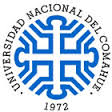- RDI Principal
- →
- Centro Regional Universitario Bariloche
- →
- Artículos
- →
- Ver ítem
JavaScript is disabled for your browser. Some features of this site may not work without it.
Mostrar el registro sencillo del ítem
| dc.creator | Jiménez, Nadia Lis | |
| dc.creator | Farji-Brener, Alejandro G. | |
| dc.creator | Calcaterra, Luis Alberto | |
| dc.date | 2022 | |
| dc.date.accessioned | 2024-08-26T18:20:59Z | |
| dc.date.available | 2024-08-26T18:20:59Z | |
| dc.identifier.issn | 1461-9563 | es_ES |
| dc.identifier.issn | 1461-9555 | es_ES |
| dc.identifier.uri | http://rdi.uncoma.edu.ar/handle/uncomaid/18106 | |
| dc.description.abstract | 1. Leaf-cutting ants are major pests of Neotropics forest plantations. The lower delta of the Paraná River contains the main Argentine Salicaceae production, strongly attacked by Acromyrmex lundii and Acromyrmex ambiguus. Nevertheless, there is no damage quantification in willow plantations attributed to leaf-cutting ant species. 2. In an area without leaf-cutting ant control, we installed 15 blocks with eight willow stakes each: four clones two treatments; with and without leaf-cutting ant exclusion. We used two traditional (Americano, Nigra 4) and two new (Géminis, Yaguareté) commercial clones. During 2014–2018, we measured the damaged foliage, height and diameter of each tree. 3. Foliage was damaged intensely during the first 2 years. After 1537 days, the loss in height and diameter was greater in Americano (70%), followed by Géminis (50%–60%), Yaguareté (40%–50%) and Nigra 4 (45%–40%). Stake survival with exclusion was greater (>80%) than stakes without exclusion (<50%). Total loss of wood volume was 93% for Americano, followed by Géminis (77%), Yaguareté (66%) andNigra 4 (51%). 4. Although the new clones were heavily attacked, they produced two to three times more wood volume than Americano; replacing Americano with the new clones would help to reduce leaf-cutting ants impact on plantations and pesticides released into the environment. | es_ES |
| dc.format | application/pdf | es_ES |
| dc.format.extent | pp. 432–445 | es_ES |
| dc.language | eng | es_ES |
| dc.publisher | Wiley | es_ES |
| dc.relation.uri | DOI: 10.1111/afe.12505 | es_ES |
| dc.rights | Atribución-NoComercial-CompartirIgual 2.5 Argentina | es_ES |
| dc.rights.uri | https://creativecommons.org/licenses/by-nc-sa/2.5/ar/ | es_ES |
| dc.source | Agricultural Forest Entomology 2022;24 | es_ES |
| dc.subject | Acromyrmex | es_ES |
| dc.subject | Forest plantation | es_ES |
| dc.subject | Neotropical region | es_ES |
| dc.subject | Salix | es_ES |
| dc.subject | Wood losses | es_ES |
| dc.subject.other | Ciencias de la Tierra y Medio Ambiente | es_ES |
| dc.subject.other | Ciencias Agrarias y Forestales | es_ES |
| dc.title | Long-term quantification of leaf-cutting ant damage in willow forestations in the lower delta of the Paraná River, Argentina | es_ES |
| dc.type | Articulo | es |
| dc.type | article | eu |
| dc.type | acceptedVersion | eu |
| dc.description.fil | Fil: Jiménez, Nadia Lis. Fundación para el Estudio de Especies Invasivas; Argentina. | es_ES |
| dc.description.fil | Fil: Jiménez, Nadia Lis. Consejo Nacional de Investigaciones Científicas y Técnicas; Argentina. | es_ES |
| dc.description.fil | Fil: Farji-Brener, Alejandro G. Consejo Nacional de Investigaciones Científicas y Técnicas; Argentina. | es_ES |
| dc.description.fil | Fil: Farji-Brener, Alejandro G. Laboratorio de Investigaciones en Hormigas; Argentina. | es_ES |
| dc.description.fil | Fil: Farji-Brener, Alejandro. Universidad Nacional del Comahue. Centro Regional Universitario Bariloche; Argentina. | es_ES |
| dc.description.fil | Fil: Calcaterra, Luis Alberto. Fundación para el Estudio de Especies Invasivas; Argentina. | es_ES |
| dc.description.fil | Fil: Calcaterra, Luis Alberto. Consejo Nacional de Investigaciones Científicas y Técnicas; Argentina. | es_ES |
| dc.cole | Artículos | es_ES |



